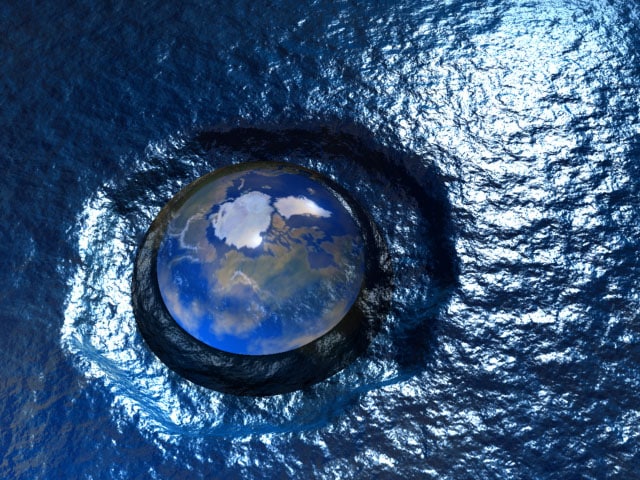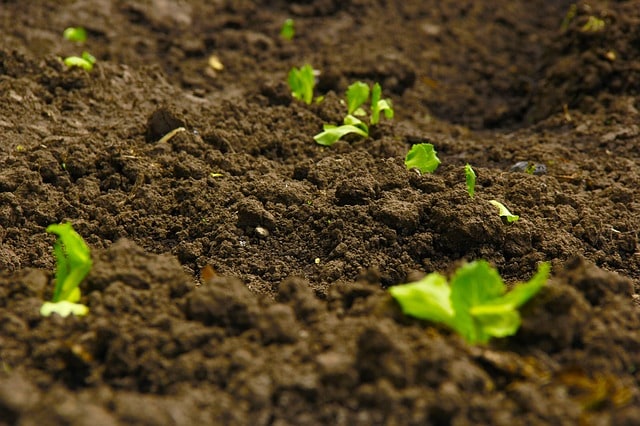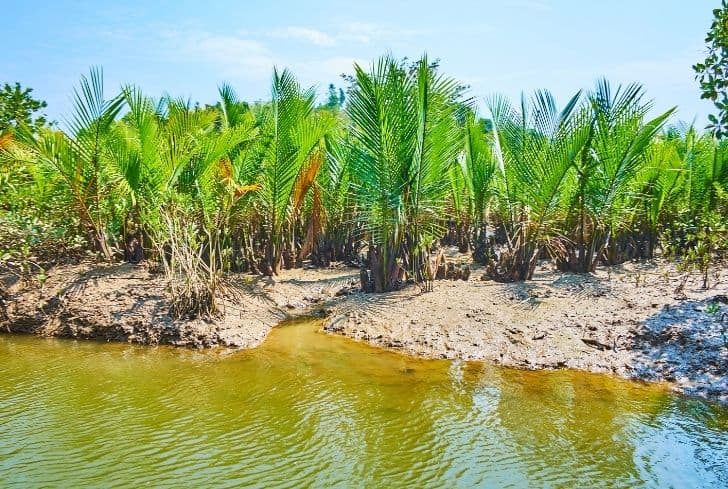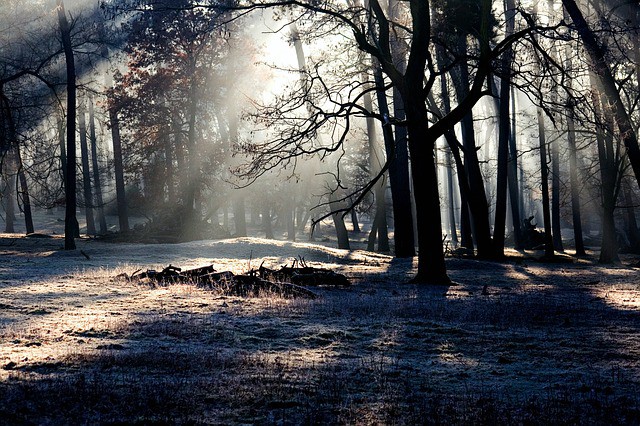Natural and Man-made Causes of Climate Change

The climate changes when the total amount of energy in the Earth’s atmosphere changes. The energy changes spread out around the globe upsetting climate processes. There are many causes for these energy shifts, called climate forcers; some internal in the climate itself, some natural but external to climate, and some man-made.
According to Wikipedia,
“Climate is the long-term pattern of weather in a particular area. It is measured by assessing the patterns of variation in temperature, humidity, atmospheric pressure, wind, precipitation, atmospheric particle count and other meteorological variables in a given region over long periods of time. Climate is different from weather, in that weather only describes the short-term conditions of these variables in a given region.”
One of the big questions in the climate change debate: Are humans any smarter than frogs in a pot? If you put a frog in a pot and slowly turn up the heat, it won’t jump out. Instead, it will enjoy the nice warm bath until it is cooked to death. We humans seem to be doing pretty much the same thing.
– Jeff Goodell
Natural Causes of Climate Change
- Solar Output
As the Suns intensity strengthens or weakens, the amount of energy radiated to Earth’s atmosphere changes. Changes in the sun’s intensity (solar irradiance) have influenced energy shifts for centuries, however, solar energy has not changed enough recently to account for the global warming we’re now experiencing. In fact, measurements have shown a slight decrease in intensity in the past few decades.
- Orbital Shifts
As the Earth orbits around the sun, slight variations in its orbit occur, much as the globe model in geography class wobbles on its axis. This changes how much of the sun’s energy reaches the Earth. These variations are considered too long-term, however, and, while they do affect the Earth’s energy input, do not really have a noticeable effect on the huge climate changes that have occurred during human’s existence.
- Volcanic Activity
Volcanic eruptions affect how much energy can enter the Earth due to the aerosol particles that are expelled into the atmosphere. This only happens episodically, however, and has short-term effects on the climate. Moreover, while carbon dioxide is released into the air, its amounts are minimal and the aerosols released into the air actually serve to cool the Earth down by blocking sunlight. The lava expelled by eruption volcanoes does not contribute to global warming either, as it only covers a small area. Thus, while volcanic eruptions are always included in climate forcer lists, its contribution is actually up for debate.
- Continental Drift
All the separate continents gradually drifted apart over a span of 250 million years, and they are still drifting today. This shifting of large landmasses changed ocean current flow and winds and altered the atmosphere. As in the case of other natural causes of climate change mentioned here, however, the effects of continental drift is considered to be too small to be a real contributor.
Internal Climate Causes
- Seasonal Changes
Seasonal changes occur naturally and they themselves encourage carbon dioxide release. Warmer oceans or autumnal leaf fall are two such seasonal changes that impact energy input.
- El Nino-La Nina
Around every 4 years, El Nino starts over the Pacific Ocean when the trade winds blowing over it from East to West weaken. Warm surface water that is normally pushed westward slows down. The water surface of the eastern Pacific heats up while the water surface of the western Pacific cools down.
Converse conditions known as La Nina sometimes follows El Nino during which the surface waters of the eastern Pacific cool down instead. Both these conditions affect circulation patterns in the atmosphere and, ultimately, influence the climate. El Nino raises global temperatures whereas La Nina decreases it.
- Arctic Oscillation
Changing air pressure patterns in the northern hemisphere causes arctic oscillation. Normally the atmospheric pressure in the polar regions are opposite to one another. The first stage of Arctic oscillation causes this pressure difference to widen even more, which raises temperatures in parts of Europe and North America and lowers temperatures in the Arctic. The second stage of the oscillation brings about the opposite effect. Arctic oscillation influences regional weather more than global temperature.
Man-made Causes of Climate Change
We are accelerating the rate of climate change far past what the influence of the sun or any natural forcer could achieve. Processes in our daily lives are expelling chemicals and foreign substances into the air that affect and increase the natural greenhouse gases, which then absorb more energy from the sun. This results in global warming and changes the climate.
- Greenhouse Gas Emission
Greenhouse gas emission is said to be the largest man-made climate forcer as it is so prevalent and large-scale. Greenhouse gases occur naturally in the atmosphere and they serve to absorb and radiate the Sun’s heat around the globe for the benefit of life. Humans are now producing large amounts of these gasses on such a level that it has upset energy balance.
Some of these greenhouse gases are long-lived like carbon dioxide and nitrous oxide, so the damage they cause is obvious. However, short-lived substances like methane still affect the energy balance as they are very potent and there are so many of them. Moreover, human activity continues to release them into the atmosphere.
- Fossil Fuel Usage
Fossil fuel burning produces, among other chemicals, carbon dioxide that is the primary greenhouse gas forcer of climate change. In itself it is not a particularly warming gas, but the amount that we are emitting into the atmosphere makes it the most damaging. It also has a long life in the atmosphere, only fully dissipating after 50,000 years during which time it continues to absorb and radiate heat.
- Black Carbon
Another by-product of fossil fuels is black carbon, which is produced when fossil fuels, biofuels, and biomass are not properly combusted and emit soot. It enters the atmosphere as fine particles (aerosols) and absorbs large amounts of heat and infrared radiation. The majority of black carbon in the U.S. is emitted from vehicles, especially diesel-fuelled ones. Wildfires and industrial and residential heating are also black carbon emitters.
Black carbon is drifted across the globe on winds, and can be deposited on snow or ice. This darkens snow or ice, thus increasing its ability to absorb heat. This, in turn, forces the ice to melt faster.
- Industrial Production & Farming
Emissions from factories contribute directly to the greenhouse effect while runoff waste alters the chemical make-up of water and air. Chemical pesticides, herbicides and fungicides used in industrial farming also wreak havoc to the atmosphere. Livestock farming also releases large amounts of methane into the air, driving up the amount of greenhouse gases already in the atmosphere.
- Agriculture
Agriculture accounts for 14% of total greenhouse gas emissions, and with the need for more agriculture to provide for our ever-growing needs, its impact is growing rapidly. The main agricultural contributors to climate forcers include carbon released from farmland soil by inappropriate farming and grazing practices.
Changes in land use for agriculture is also a large contributor to climate change. Tillage and water rerouting has accelerated soil erosion, soil organic matter has been lost due to chemicals, and soil itself has been altered and polluted by chemical fertilizers, all of which affect the atmosphere with various emissions.
- Deforestation
Vast swatches of primary forests are being wiped out to make way for unsustainable farming, urbanization or for logging and the production of paper goods. Trees absorb carbon dioxide from the atmosphere, so as more trees are cut down, the level of carbon dioxide in the air will increase. In short, deforestation affects climate in a big way.
- Urbanization
As our populations increase and our cities reach maximum capacity, we start to expand them in what is called urban sprawl. This decreases the amount of vegetation available to absorb carbon dioxide. In turn, urbanization means more greenhouse gas, pollution and waste output.
Other damaging side effects of urbanization include the Heat Island Effect: air and surface temperatures are driven higher above urban areas than above rural areas due to concentrated usage of fossil fuels, electricity etc. As urban areas grow, so will the number of heat islands, which will drive up the overall atmospheric temperature. A side effect of this side effect is that water vapor above urban areas will also be driven up, causing more clouds and rain.
- Sulfates, Organic Carbons & Aerosols (small particles)
These are actually negative forcers, but warming and cooling aerosols can change some of the processes of clouds. As negative forcers, clouds reflect sunlight back up. As positive forcers, they trap outgoing heat.
One cause of climate change that is up for debate as to whether it is natural or man-made is our very own respiration. Every breath we take releases carbon dioxide into the atmosphere. Whatever it is, we all impact climate change, so we should all make the effort to slow it down too.






